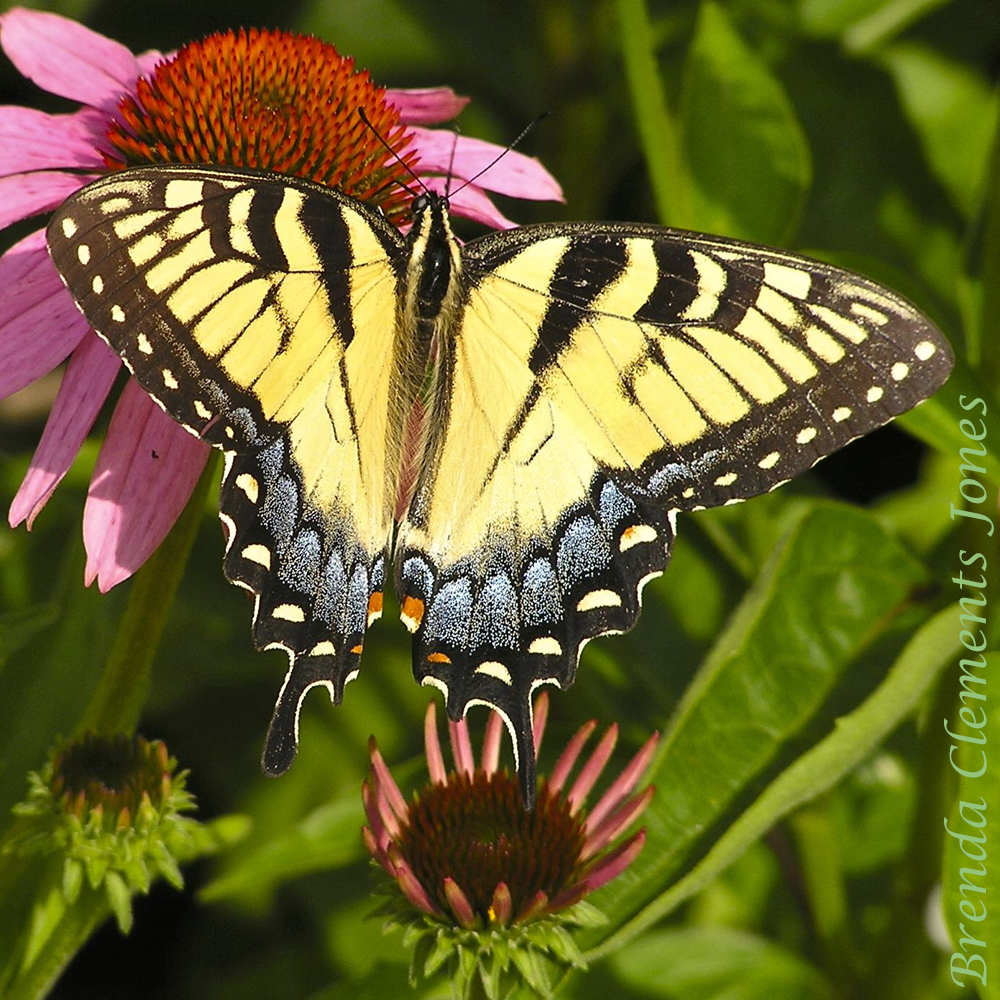
My first sighting this season was yesterday. The state insect of Virginia, the Eastern Tiger Swallowtail Butterfly (Papilio glaucus). Native to eastern North America. The butterfly I saw yesterday had just emerged from its chrysalis. Brand new.

In the autumn an Eastern Tiger Swallowtail caterpillar will form itself into a chrysalis. NOT a cocoon but a chrysalis. Cocoons are used by moths. Chrysalises are used by butterflies. In ten to twenty days or over the winter the caterpillar makes incredible changes. As if by magic it will become a butterfly — to live just six to fourteen days.

Mainly males, after emerging, often will gather at puddles to take in sodium and minerals which tend to be lacking in the adult’s diet and are necessities for reproduction and flight. This is called “puddling.”

Speaking of reproduction, Eastern Tiger Swallowtails generally have two broods each year. Females lay their eggs on such trees as Tulip Poplar (Liriodendron tulipifera) and Wild Black Cherry (Prunus serotina). Those eggs will hatch in four to ten days as caterpillars. The earliest stage of the caterpillar looks just like bird droppings. The mature caterpillar is green, with eye spots, and a pale “neck ring.” Further to the front is a little purply-pink head.

Although most females look nearly like males, mostly yellow and black, there is a black form of the female Eastern Tiger Swallowtail. This is a method of protection. The black form is a mimic of the Pipevine Swallowtail (Battus philenor) which has a disagreeable taste. Predators have learned to avoid both the Pipevine Swallowtail and the Eastern Tiger Swallowtail’s black form. The portion of females with this coloring is more common in areas where there are more Pipevine Swallowtails.

The caterpillar becomes a chrysalis which becomes a dazzling butterfly. And so it goes. On and on.

4 responses to “Eastern Tiger Swallowtail”
Amazing…especially the disguise of blackness. Thanks, Brenda.
Hi Barbara!
Nature ALWAYS amazes me. It astounds me how things such as that mimicry (the female tiger swallowtail looking like a pipevine swallowtail) get worked out!
I’m delighted that Kumud got you started reading my posts!!
Bren
so you’ve already seen on by 3rd week o March…. good to know and again, lovely article..
Sure did see one Ken. Such a pleasant surprise. Thanks bunches for you kind comments.
And an always, thank you for reading my posts.
Bren